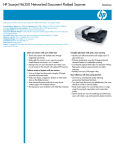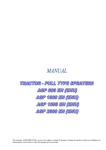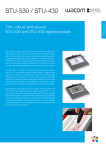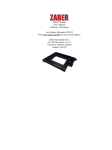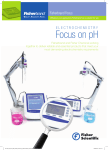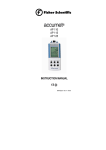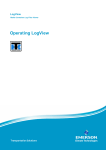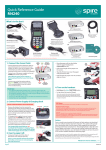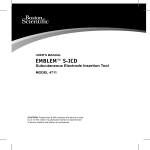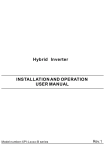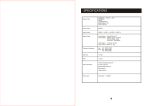Download RAMP™ System User Manual - Patient Postioning Systems
Transcript
RAMP™ System User Manual RAMP - Rapid Airway Management Positioner™ FOR SINGLE USE ONLY FOR USE BY TRAINED PERSONNEL ONLY RAMP - Air Supply Pump FOR USE BY TRAINED PERSONNEL ONLY Patient Positioning Systems, LLC 3003 West 11th, Suite 143 Eugene, OR 97402 USA www.ppsproducts.com www.patientpositioningsystems.com Date of Issue: July 28, 2015 Table of Contents 1. symbols Reference................................................................................3 2. Intended Use...........................................................................................3 3. Contraindications...............................................................................4 4. Warnings, Cautions and Notes....................................................5 5. Parts List...................................................................................................8 6. Product Specifications.....................................................................9 6.1 Materials specifications............................................................9 6.2 Product dimensions......................................................................9 6.3 Patient weight limit.....................................................................9 6.4 Inflation/deflation valves.......................................................9 6.5 Storage............................................................................................... 10 7. Clinical Application......................................................................... 10 8. Use................................................................................................................11 8.1 Assembly..............................................................................................11 8.2 Joystick Operation...................................................................... 12 8.3 Foot Pedal Operation................................................................ 13 8.4 RAMP Positioning Device........................................................ 14 9. Inspection and maintenance....................................................... 15 9.1 Inspection.......................................................................................... 15 9.2 Maintenance................................................................................... 15 10. Appendix................................................................................................. 18 10.1 Electromagnetic Compatibility.......................................... 18 2 RAMP System User Manual - Table of Contents 1. Symbols Reference The Rapid Airway Management Positioner (RAMP™) positioning device manufactured by Patient Positioning Systems, LLC is a single-use applied patient part (i.e., the device comes in direct contact with the patient’s body). It carries the following safety symbols: The BF (body protected) symbol means that the input connectors are suitable for connection to humans provided there is no direct electrical connection to the heart. Please consult all accompanying instruction before attempting to use the device. This product is intended for single use only. Do not dispose of this product as unsorted municipal waste. For more disposal information, contact the manufacturer. 2. Intended Use The intended use of the RAMP system is to pneumatically position the head and torso of a patient lying in the supine position without manual lifting. RAMP System User Manual - 1. Symbols Reference 3 3. Contraindications The RAMP system must not be used in cases of suspected cervical spine injury or if a qualified healthcare provider believes that such an application would endanger the patient. The inflatable RAMP positioning device should not be used for patients weighing above 600 lbs (273 kg). 4 RAMP System User Manual - 3. Contraindications 4. Warnings, Cautions & Notes Please read the instructions for use carefully. 4.1 Warnings • Use the RAMP positioning device with a UL 60601 certified air supply only. • During inflation of the RAMP positioning device, air pressure must not exceed 4 PSI. • To ensure a pressure no greater than 4 PSI, use the RAMP positioning device with a wall-air setup only if an approved in-line regulator is attached. • Do not use the RAMP positioning device, air supply or any of its components if they have been damaged in any way. • Perform a functional check before each use of the RAMP positioning device. • The inflatable positioning device is for single use only. Do not attempt to clean and/or reuse this portion of the device after the first use. • The RAMP positioning device is only to be used by trained personnel. • The RAMP positioning device may be placed in a suitable disposal container in accordance with local guidelines for disposal of single-use medical devices. • To avoid risk of electric shock, this equipment must only be connected to a supply mains with protective earth. • Do not modify this equipment authorization of the manufacturer. without RAMP System User Manual - 4. Warnings, Cautions & Notes 5 4.2 Cautions • Do not leave patients unattended when using the RAMP system. • Do not use the RAMP positioning device to transfer or move the patient laterally or off the table as injury may result. • Have a second inflatable RAMP positioning device or an alternative positioning method readily available for use. The inflatable RAMP positioning device is not sterile. • Placing a sheet between the RAMP positioning device and the patient does not prevent contamination of the product. • Ensure the device is positioned so that (emergency) disconnect can be made of the RAMP positioning device from the RAMP air supply pump and the air supply pump can be unplugged from the electrical wall outlet. • The RAMP positioning device is for single use only. • Incompatibility of technologies is always a potential problem in the hospital environment. Therefore, one should always be prepared for the unexpected. The RAMP system air supply pump has been designed and tested to be electromagnetically compatibile with other medical equipment in its electromagnetic environment. It does not emit significant levels of electromagnetic energy that can cause interference, and it conforms to the following standards: CISPR-11:2010; IEC 610004-2:2010; IEC 61000-4-3:2010; IEC 61000 4-4:2010; IEC 6100 5-5:2014; IEC 6100 5-6:2003; IEC 6100 4-8:2009 and IEC 61000 4-11:2004 (See certificate of conformance in the Appendix). 6 RAMP System User Manual - 4. Warnings, Cautions & Notes 4.3 Notes • The information given in this manual serves only to instruct the user in the correct handling of the RAMP system. • The RAMP system is classified as a Class I device by the FDA. The RAMP positioning device is also classified as Class I Normal Flammability as defined by the Consumer Products Safety Commission’s Flammable Fabric Regulation, 16 CFR § 1610. However, users are advised to follow standard safety protocols when using the product near high-intensity heat sources. • Patient Positioning Systems, LLC is not responsible for any damage to the system or patient resulting from incorrect use. • The approved RAMP air supply unit meets medical electronic interference requirements. • Read these safety instructions carefully and keep them for later reference. • Service and maintain the RAMP system as specified under Section 9, Inspection and Maintenance. • The RAMP system is designed and tested to meet the requirements of IEC 60601-1, Electrical Medical Equipment - Part 1: General requirements for basic safety and essential performance. Refer to this standard regarding safety requirements for this device. RAMP System User Manual - 4. Warnings, Cautions & Notes 7 5. Parts List The RAMP system consists of an applied patient positioning device (pillow) (1), an air supply pump (2), a joystick (3), two foot pedals (4), air tubings and fittings (5), and a cart (6). Before installation and use of the system, ensure the following items are available: 1 2 3 4 5 6 No. Item Part Number 1 RAMP single-use patient positioner PPS-R1001 2 RAMP air supply pump PPS-AP110-120V/ PPS-220-240VAC 3 RAMP joystick PPS-AFP 4 RAMP foot pedals (2) PPS-AJS 5 RAMP tubings/fittings PPS-ATubing10 6 RAMP cart PPS-Cart Caution: The above parts are specified by the manufacturer as required for the safe operation of the RAMP system. To maintain the warranty and ensure safety when replacing parts, do not modify the specified parts or attempt to interchange the specified parts with other parts. Should an attempt be made to use a non-manufacturer interchangeable part, the device will not meet certified design or conformance standards. The manufacturer provide information upon request to assist service personnel in repairing those parts of the RAMP system that are designated by the manufacturer as replaceable by service personnel. 8 RAMP System User Manual - 5. Parts List 6. Product Specifications The RAMP positioning device inflates to lift and position the head and torso of a supine patient for convenient and effective positioning. The device has two chambers that can be inflated separately, making it easier to achieve ear to sternal notch positioning regardless of the patient’s body habitus. 6.1 Material specifications • Polyethylene, which has been tested to be biocompatible in accordance with ISO 10993 standards • DEHP free • RF welding on all seams • Latex free 6.2 Product dimensions • Deflated: 43.75 in. L, 27 in. W 6.3 Patient weight limit • Not to exceed 600 lbs (273 kg) 6.4 Inflation/deflation valves • Inflation valves are located on the top portion of the chambers RAMP System User Manual - 6. Product Specifications 9 6.5Storage Ambient Temperature Relative Humidity 28°C (82°F) 10°C (50°F) 75% 30% Atmospheric Pressure 1060 hPa 700 hPa 7. Clinical Application The RAMP positioning device is a rapidly inflated, customizable adjunct to facilitate proper positioning of patients in need of airway management. The RAMP system consists of a RAMP positioning device, air tubing, a medically approved air supply, a single axis proprietary joystick, and a hands-free foot pedal configuration. 10 RAMP System User Manual - 7. Clinical Application 8. Use The RAMP system ships with all fittings for assembly in place. 8.1 Assembly a. One end of the flexible air hose ships attached to the air supply pump. The other end of the tubing connects to the fitting located on the controller (i.e., foot pedals or joystick). 2 TO INSERT: Push the airline into the fitting. The internal lock claws grab and hold the airline. 1 TO REMOVE: Push the airline and “release ring” on the fitting down firmly. Then, while still holding “release ring” down, pull the airline out. b. Take care to position the cart and other RAMP system equipment to make it easy to connect/disconnect the RAMP positioning device from the joystick or foot pedals and to plug/unplug the air supply pump electrical cord. RAMP System User Manual - 8. Use 11 c.The RAMP positioning device (pillow) has two independently controllable chambers that each has a female fitting located along the seam. Connect each chamber of the RAMP positioning device to the air supply pump by utilizing the color-coded quick connect/disconnect connectors. 8.2 Joystick Operation a. The RAMP system may be controlled using a proprietary single-axis joystick by joining each male coupling with its corresponding female fitment— simply insert and twist until the two pieces are snugly attached. Should it become necessary to rapidly deflate the RAMP device, the coupling may be easily disengaged from the fitment by pushing forward slightly and twisting. Female fitment Male coupling b. The single-axis joystick moves in each cardinal direction to control inflation/deflation of the two chambers. Movement upwards or “north” will inflate the large chamber, while deflecting the joystick downwards or “south” will deflate the large chamber. Likewise, right/left or “east/west” movements will control airflow into and out of the smaller chamber. 12 RAMP System User Manual - 8. Use 8.3 Foot Pedal Operation a. The RAMP foot pedal assembly comes fully assembled. Like the joystick controller, simply join each color -coded male coupling with its corresponding female fitment. Insert and twist until the two pieces are snugly attached. Should it become necessary to rapidly deflate the RAMP device, the coupling may be easily disengaged from the fitment by pushing forward slightly and twisting. b. Depress the top of each foot pedal to commence inflation. Each foot pedal will control the upper or lower pillow chamber, respectively. c. Depress the bottom of the foot pedal to allow air to vent to the atmosphere and deflate the chamber. Inflation Deflation d. When using the hands-free solution, toggle between each foot pedal in a controlled fashion to slowly fill each chamber. To deflate a chamber, depress the bottom of the foot pedal to vent air to the atmosphere. When using either controller, be mindful not to overinflate either chamber. e. To safety terminate the inflation operation, remove feet from foot pedals and/or unplug the air pump from the electrical wall outlet. RAMP System User Manual - 8. Use 13 8.4 RAMP Positioning Device a. After removing the product from its packaging, begin set up by correctly situating the patient on the deflated RAMP device. While locating the top of the patient’s shoulder blades on the area that states “NAPE OF NECK,” be sure to center the patient’s head on the “T” mark printed on the smaller air chamber. Correct positioning of the patient’s midline along the “SPINAL ALIGNMENT” indicator will also help to prevent rolling once the device is inflated. b. If at any point the patient appears to be uncentered or unstable, immediately deflate the RAMP device and reposition the patient in accordance with the instructions above. The large chamber accomplishes most of the lifting, whereas the smaller chamber located under the patient’s head is meant for finetuning the patient position and optimizing the laryngeal view. Fully Inflated Bag c. Inflate the RAMP positioning device until the patient’s ear canal is aligned with the sternal notch. Be mindful of over-inflation. d. For rapid deflation, disconnect the couplings from the female fitments, and the air will immediately vent from the chambers. 14 RAMP System User Manual - 8. Use 9. Inspection & Maintenance 9.1 Inspection It is recommended that the RAMP positioning device, joystick, foot pedal, air pump and air hoses be inspected before each use to insure the system’s effective operation. Items that should be inspected include the power cord for damage, the positioning device and air hoses for cuts and tears, and the foot pedal and joystick for any sticking. Damaged parts on the positioning device should be replaced immediately, and other components should be replaced as soon as possible. 9.2 Maintenance The RAMP positioning device is for single-use only and should not be cleaned and reused. It should be disposed of after each use according to hospital local procedures. The RAMP air pump, foot pedal, joystick, and air hoses are considered durable medical equipment. They are designed to be used and then disinfected and put back into service. Due to the environment that these components are operated in, it is recommended that they be routinely cleaned. In between patient use or whenever soiled, the air pump and hose should be wiped down with a germicidal solution (Phenolic is preferred), or as per hospital protocol for a similar type of equipment. Use a clean sponge or paper towels dampened with the germicidal solution to wipe down all exterior surfaces. Wipe up any excess cleaning solution with clean dry paper towels and dispose of or rinse out cleaning tools properly. A diluted 1:10 solution of chlorine RAMP System User Manual - 9. Inspection & Maintenance 15 bleach to water can be used, but note that stainless steel surfaces must be immediately dried after application— chlorine residues can be aggressive to stainless steel and metals in general. The RAMP air pump is expected to have a service life of at least 10 years and should be disposed of according to hospital procedures at the end of its service life. Foot pedals have a service life of 5 years and should be replaced at the end of their service life. Tubing should be replaced annually (or sooner if there are signs of excessive wear and tear). Replace the tubing by firmly depressing the tubing and the plastic “release ring” located on the fitting. The tubing should release. Then, firmly insert the new tubing into the fitting. Failure to replace any or all of these components could result in air leaks or inflation difficulties. The RAMP air pump utilizes a sock-type filter that filters to two microns. This filter can be cleaned, sanitized and placed back into service. To access the filter, remove the screws that attach the stainless steel filter enclosure to the main body of the motor housing. Release the ground strap (green wire) and remove the stainless steel filter enclosure off to the side. Remove the sock-type filter. The filter is held in place by tension with elastic at the open end. Once the filter is removed, clean under cold running water. Place clean filter in a germicidal solution and let soak for five minutes. A 1:10 solution of chlorine bleach to water can be used. Remove from germicidal solution, and remove excess solution. Ppaper towels can be used to accelerate drying— place filter between towels and pat dry. Allow the filter to thoroughly dry before reinstalling into the RAMP air pump. 16 RAMP System User Manual - 9. Inspection & Maintenance The life of the filter is dependent upon environmental conditions and the frequency of its cleaning. Patient Positioning Systems, LLC recommends cleaning the filter at least once a quarter. Filters should be replaced every two to three years or as needed. Old filters should be disposed of according to hospital procedures at the end of their service life. RAMP System User Manual - 9. Inspection & Maintenance 17 10. Appendix 10.1 Electromagenetic Compatibility Recommended separation distances between portable and mobile RF communications equipment and the RAMP System The RAMP™ is intended for use in an electromagnetic environment in which radiated RF disturbances are controlled. The customer or the user of the RAMP can help prevent electromagnetic interferences by maintaining a minimum distance between portable and mobile RF communications equipment (transmitters) and the RAMP system as recommended below, according to the maximum output power of the communications equipment. Rated maximum outputpower of transmitter Separation distance according to frequency of transmitter m W 150 kHz to 80 MHz 80 MHz to 800 MHz 8000 MHz to 2,5 GHz d=1,2 d=1,2 d=2,3 0,01 1,12 0,12 0,23 0,1 0,38 0,38 0,73 1 1,2 1,2 2,3 10 3,8 3,8 7,3 100 12 12 23 For transmitters rated at a maximum output power not listed above, the recommended separation distance (D) in meters (m) can be estimated using the equation applicable to the frequency of the transmitter, where P is the maximum output power rating of the transmitter in watts (W) according to the transmitter manufacturer. NOTE 1 At 80 MHz and 800 MHz, the separation distance for the higher frequency range applies. 18 RAMP System User Manual NOTE 2 These guidelines may not apply in all situations. Electromagnetic propagation is affected by absorption and reflection from structures, objects and people. Guidance and Manufacturer’s Declaration – Electromagnetic Emissions The RAMP is intended for use in an electromagnetic environment as specified below. The customer or the user of the RAMP should assure that it is used in such an environment. Emissions Test RF Emissions Compliance Group 1 The GLIDETM uses RF energy only for its internal function. Therefore, its RF emissions are very low and are not likely to cause any interference in nearby electronic equipment. Class A The RAMP is suitable for use in all establishments other than domestic and those directly connected to the public low voltage power supply network that supplies buildings used for domestic purposes. CISPR 11 RF Emissions CISPR 11 Harmonic Emissions Electromagnetic Environment Class A IEC 61000-3-2 Voltage Fluctuations Flicker Emissions IEC 6100-3-3 RAMP System User Manual 19




















